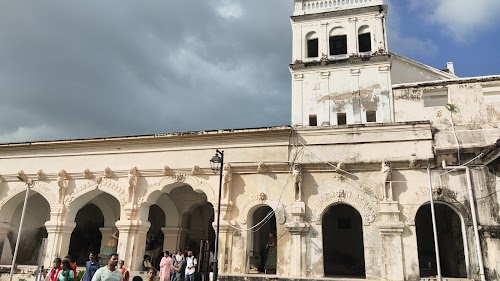
Thanjavur Maratha Palace
Thanjavur, India
- Admire the palace's diverse architectural styles.
- Discover ancient manuscripts at Saraswathi Mahal Library.
- Explore the Durbar Hall's intricate carvings.
- Learn about the Maratha rulers' history.
- Visit the various museums within the complex.
Known for:
Description:
The Thanjavur Maratha Palace, a magnificent complex in the heart of Thanjavur, stands as a testament to the region's rich history and cultural heritage. Once the official residence of the Bhonsle Maratha rulers, the palace encompasses a sprawling area with durbar halls, courtyards, museums, and libraries. Architectural styles blend seamlessly, reflecting the influences of the Nayaks, Marathas, and later, the British. Visitors can explore the impressive Durbar Hall, adorned with intricate carvings and paintings, and delve into the past at the Saraswathi Mahal Library, home to a vast collection of ancient manuscripts and books. The palace complex offers a captivating glimpse into the royal life and artistic achievements of bygone eras, making it a must-visit destination for history enthusiasts and cultural explorers.
History:
Originally constructed by the Nayak rulers of Thanjavur, the palace complex underwent significant expansion and modifications under the Maratha rule, which began in the late 17th century. The Bhonsle Marathas, descendants of Shivaji Maharaj, established their kingdom in Thanjavur and transformed the palace into their royal residence. They added several structures, including the Durbar Hall and the Saraswathi Mahal Library, enriching the palace's cultural and architectural significance. The palace served as the center of Maratha power in the region until the British East India Company gradually asserted its dominance. Today, the Thanjavur Maratha Palace stands as a protected monument, preserving the legacy of its former rulers and showcasing the diverse influences that shaped its identity.